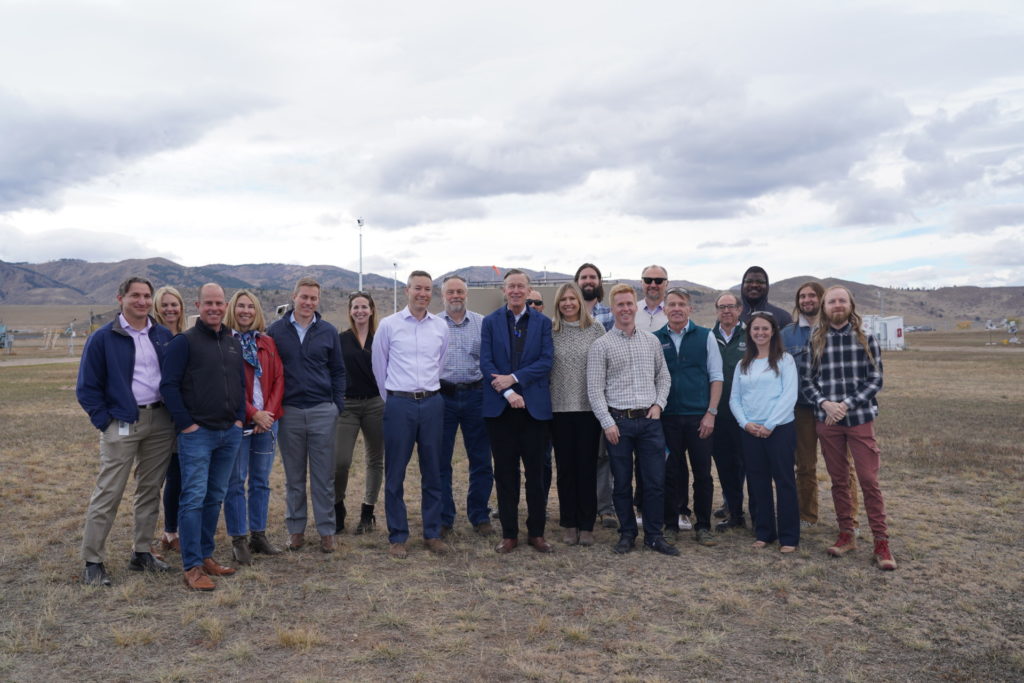
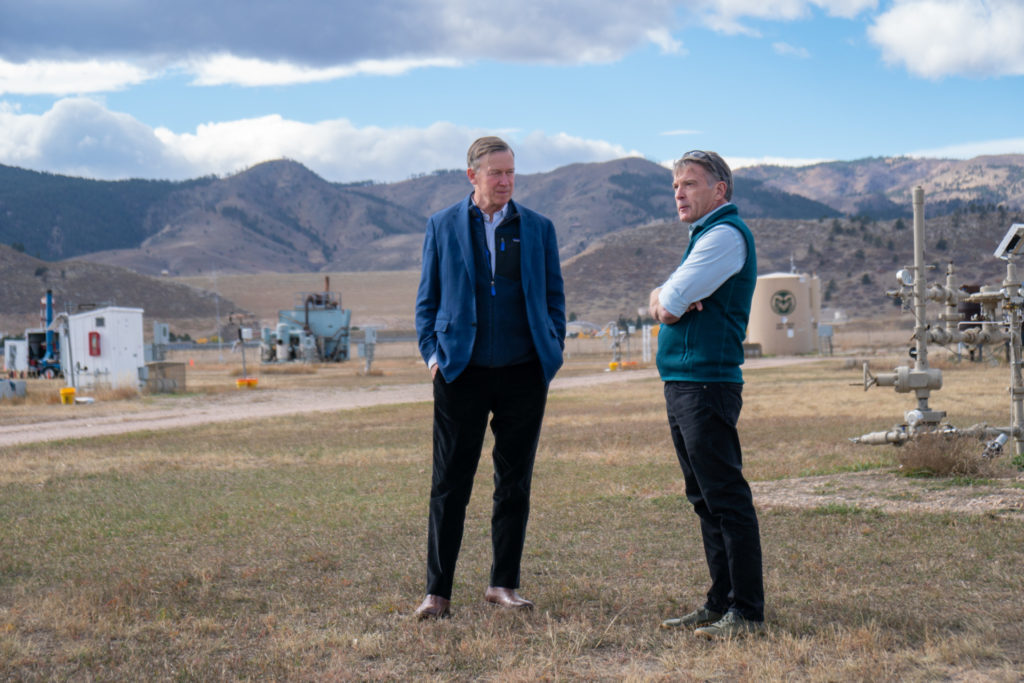
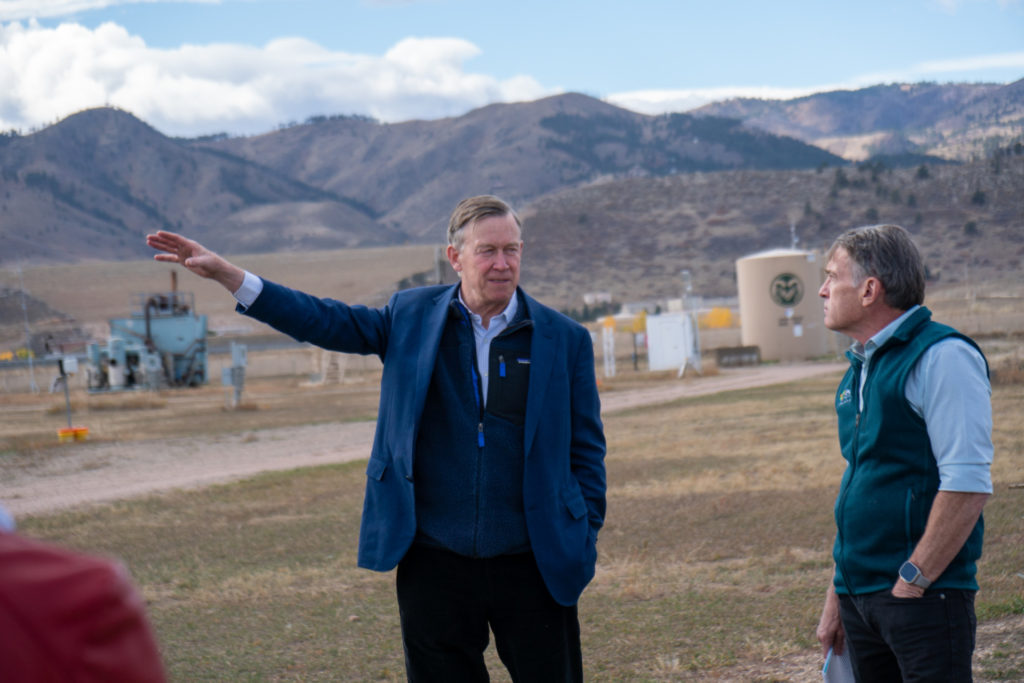
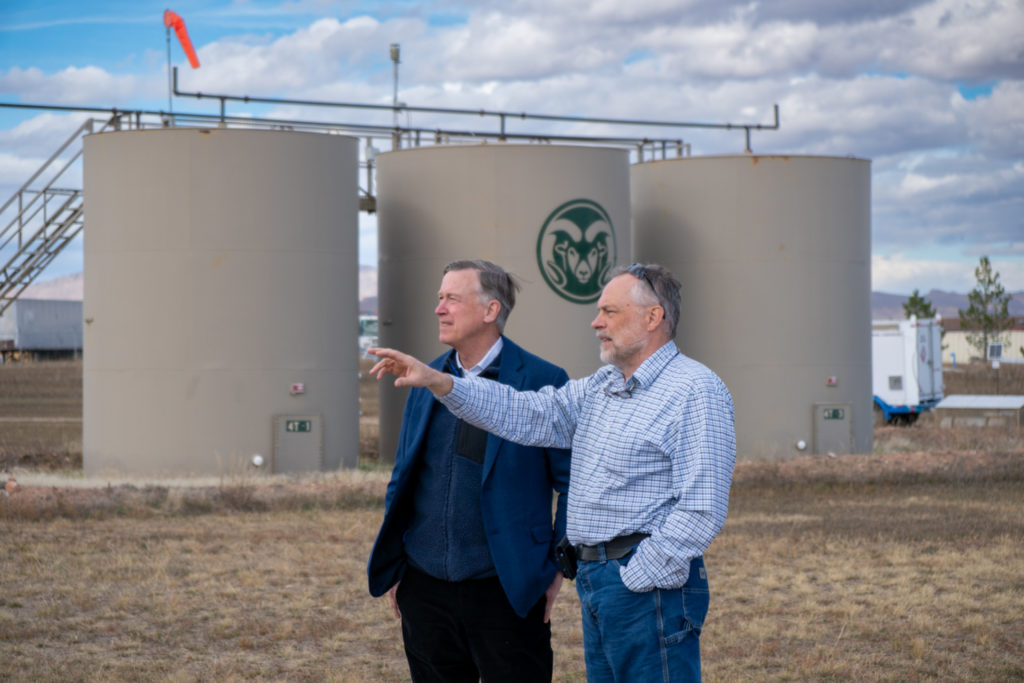
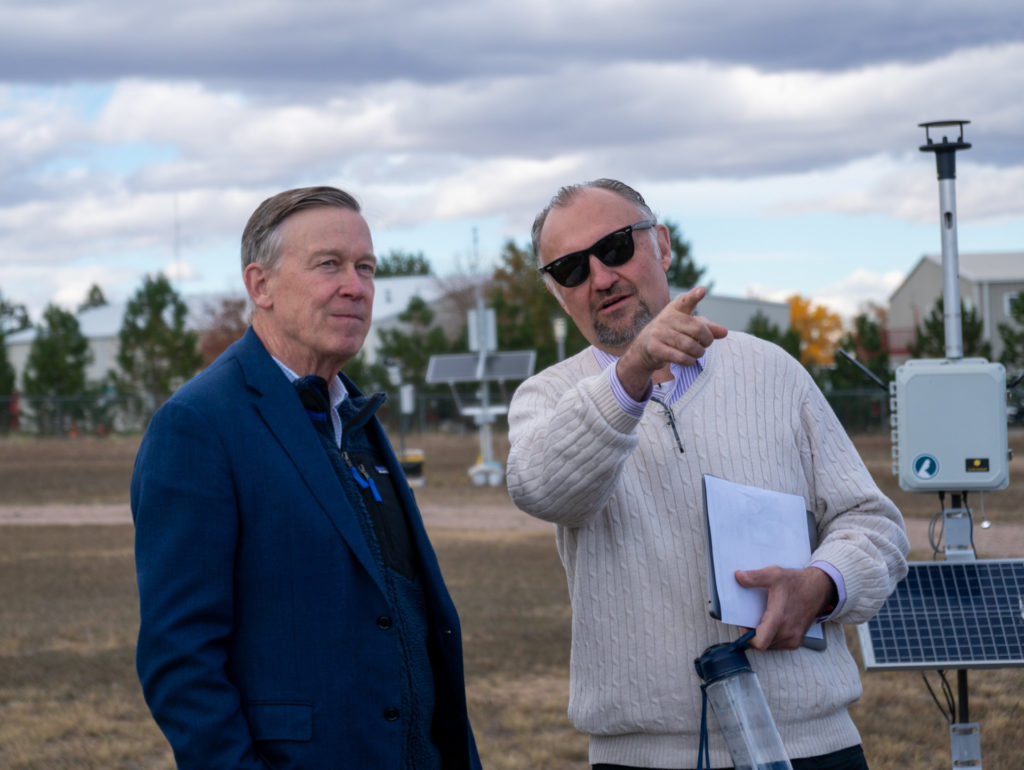
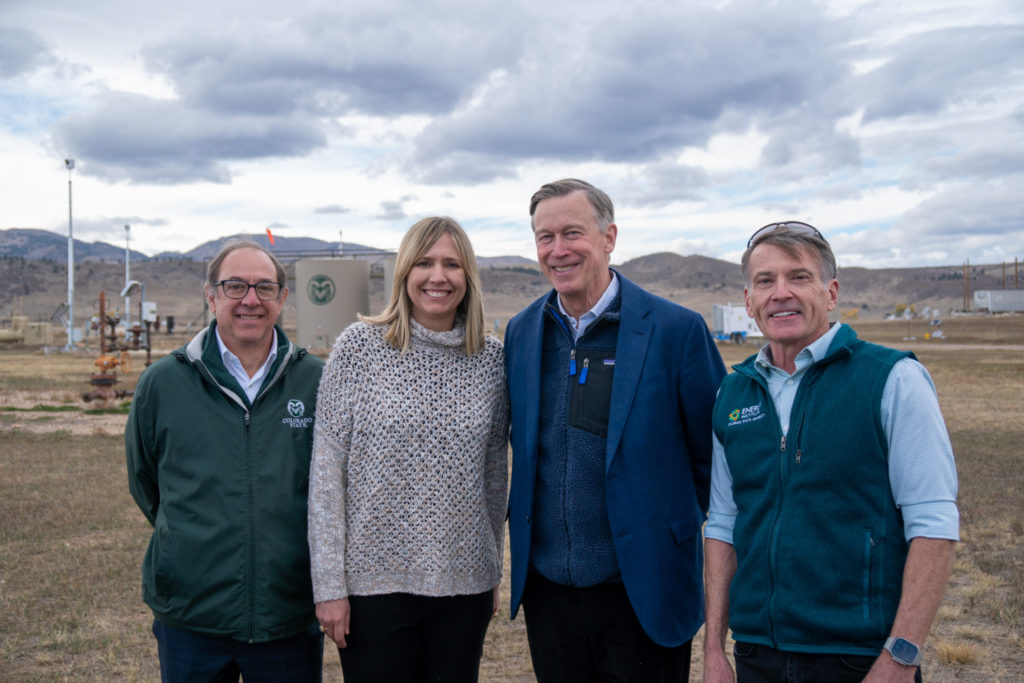
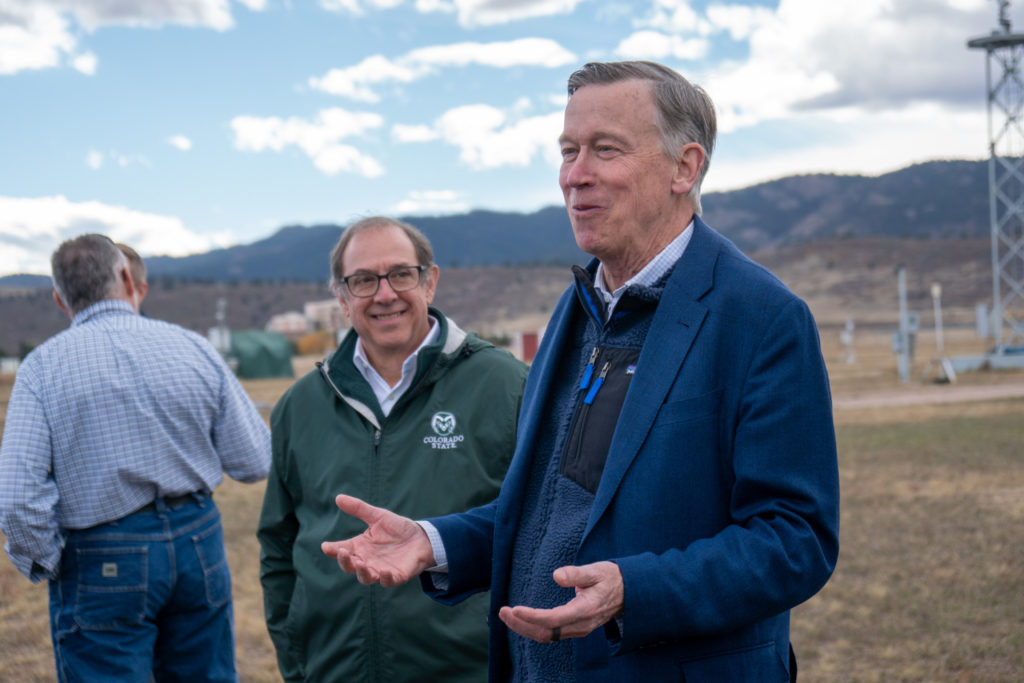
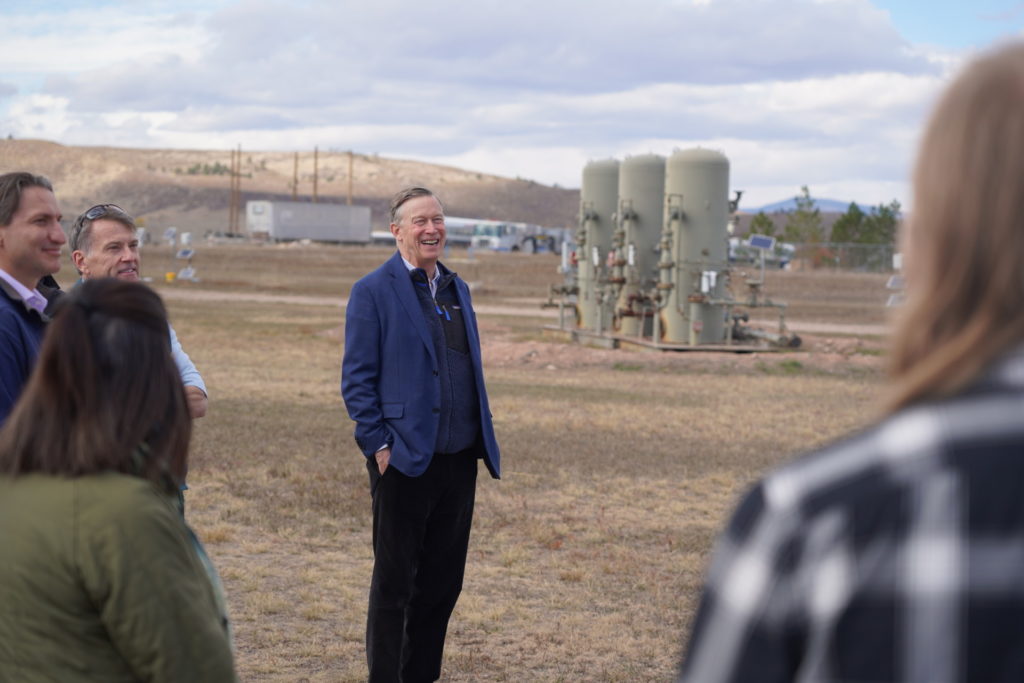
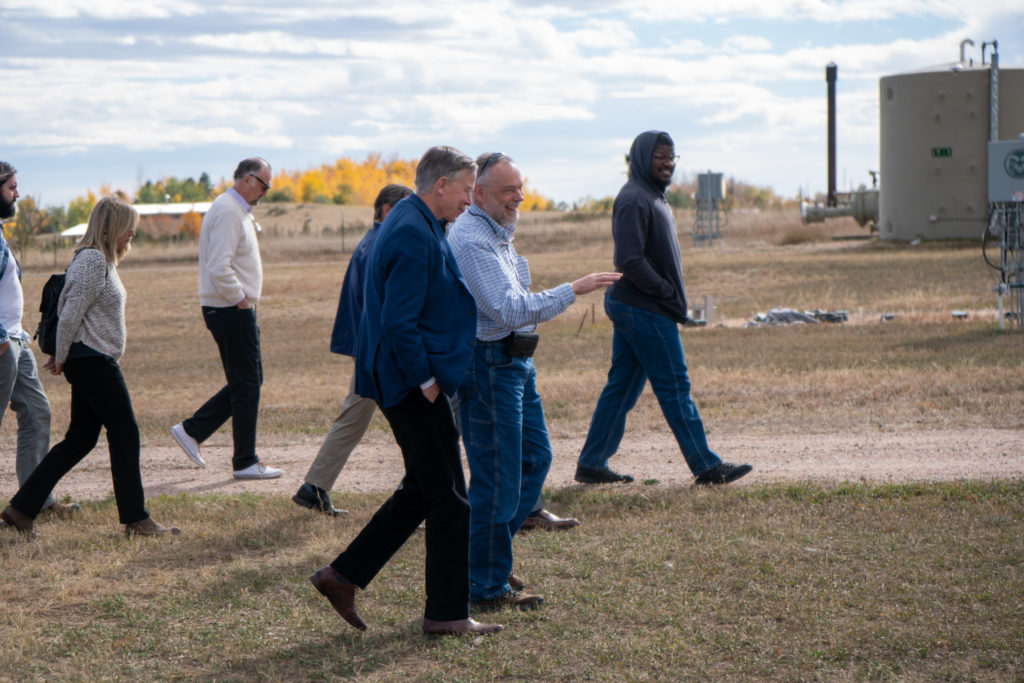
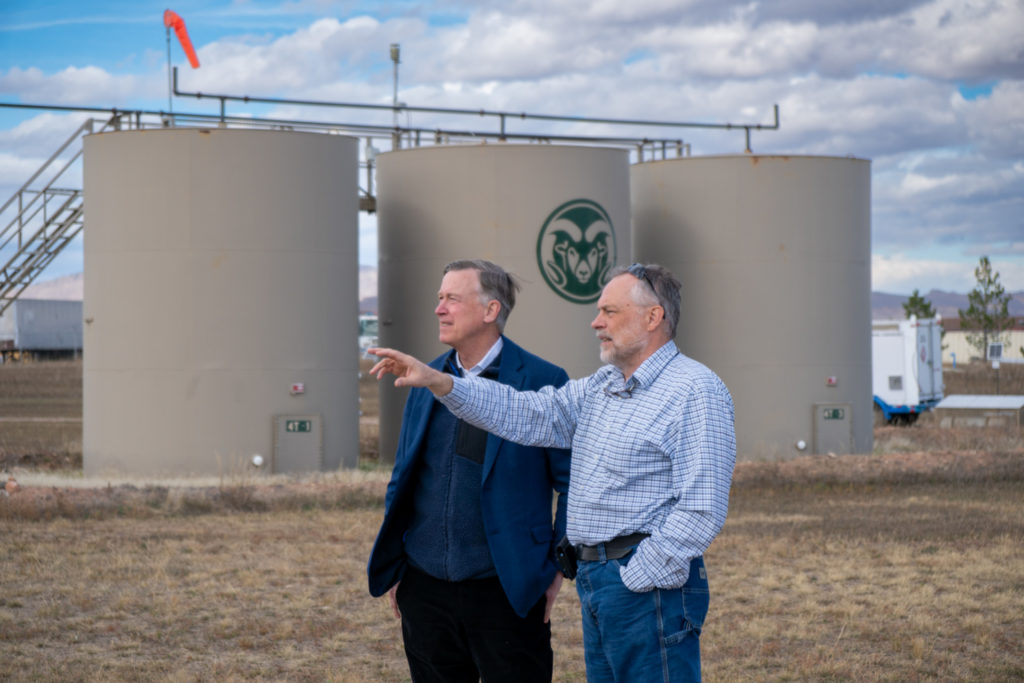
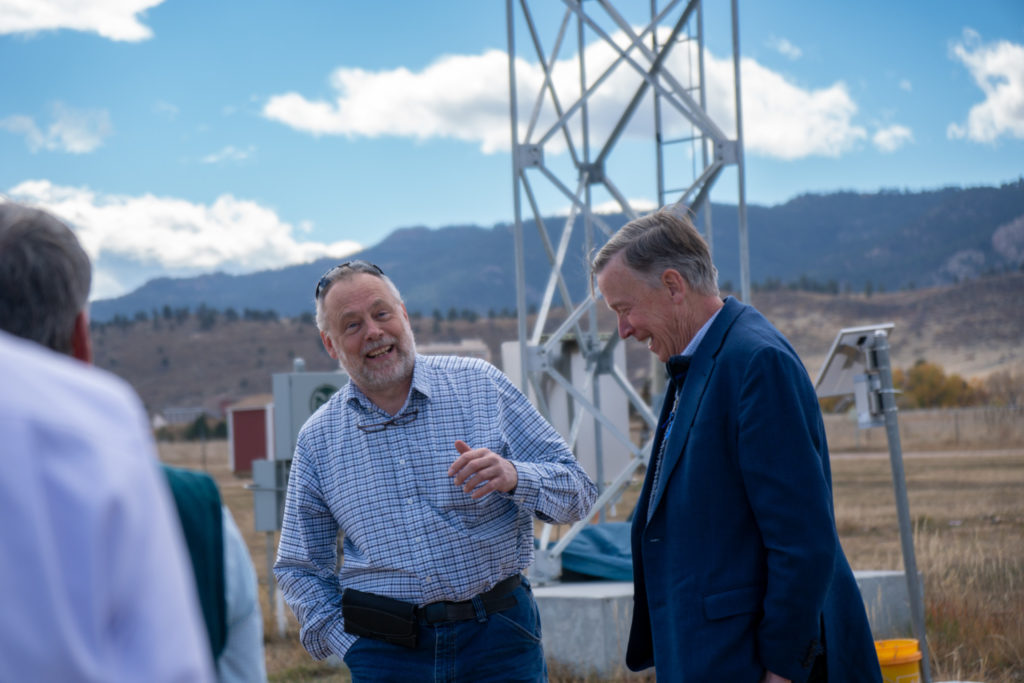
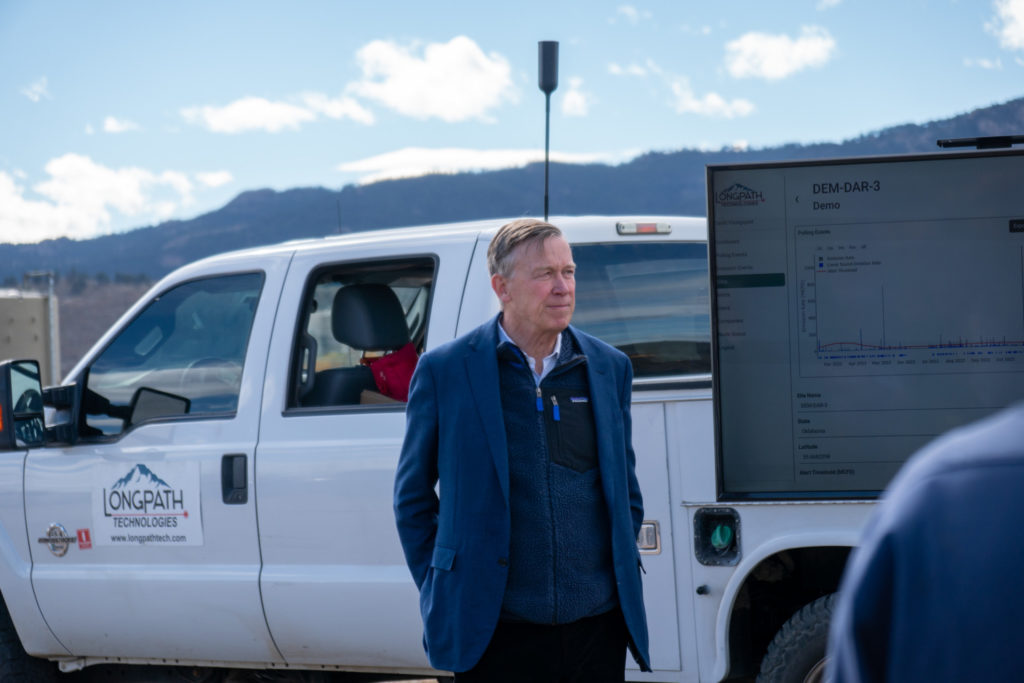
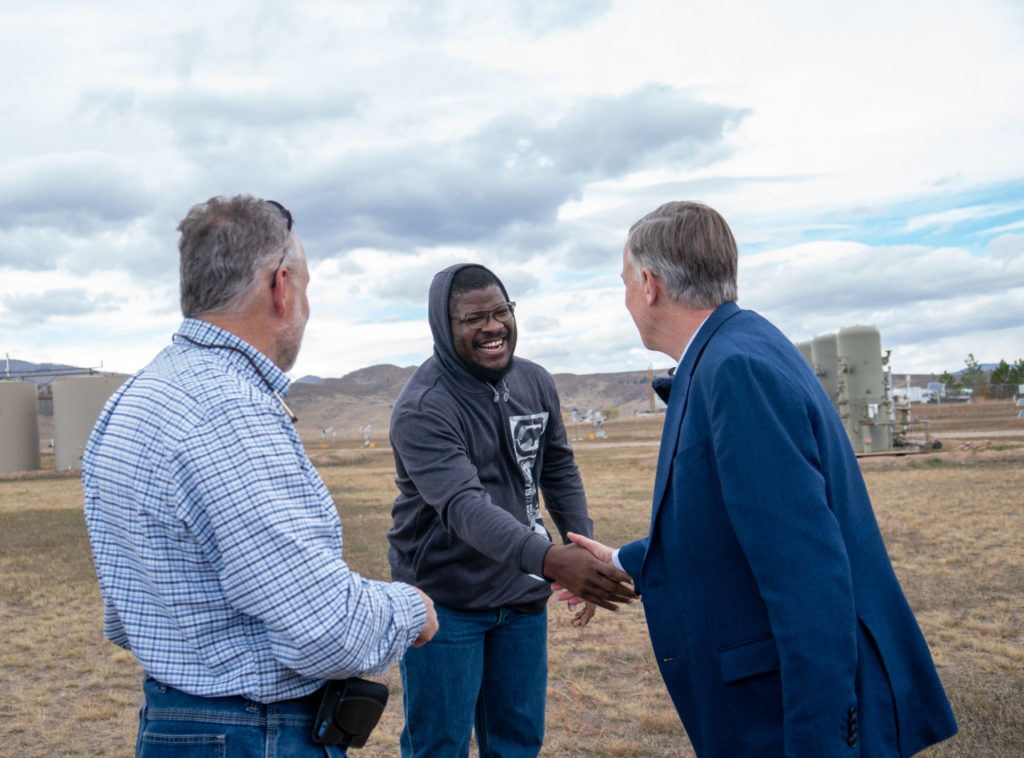
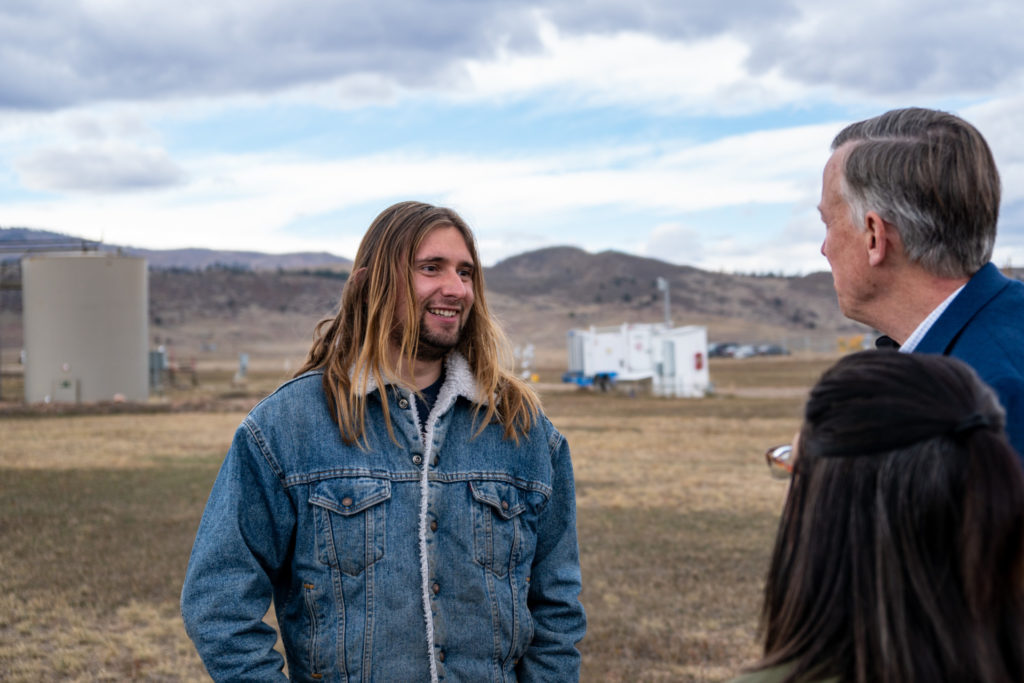
Sen. John Hickenlooper toured the METEC facility on CSU’s Foothills Campus on Oct. 25, 2022 (Photos: John Cline and Austin Hannon, CSU).
One-third of the warming from greenhouse gases is due to human-caused emissions of methane, which makes the work being done by a team of Colorado State University researchers at a facility at the Foothills Campus all the more important.
U.S. Sen. John Hickenlooper (D-Colo.) toured the Methane Emissions Technology Evaluation Center (METEC) on Tuesday afternoon. During his visit, the former geologist learned about LongPath Technologies, which uses Colorado’s own Nobel Prize-winning dual-frequency comb laser to monitor large areas of oil and gas infrastructure for methane leakage.
This technology sends out a beam of thousands of different colored lights. Since different substances absorb light in different ways, it allows scientists to determine whether methane is present in a given area.
“Colorado has become the center of the universe in terms of methane mitigation,” said Bryan Willson, executive director of the CSU Energy Institute.
Hickenlooper has helped to secure recent federal investments for methane emissions reduction, including at least $79 million for Colorado to cap orphaned oil and gas wells through the Bipartisan Infrastructure Law.
During the tour, METEC Director Dan Zimmerle showed Hickenlooper how his team replicates conditions at natural gas sites to ensure that the methane monitoring technology works in a real-world application.
The innovation happening at METEC brings together scientists, government agencies, tech companies and the oil and gas industry to develop new technologies to meet the state’s methane regulation standards.
“What’s happening here is a very Colorado-type story,” said Hickenlooper, a former brewer. “If people get together and talk, often our preconceptions of what a certain problem is shows it’s not a problem at all … you just need to figure it out over a beer.”
Courtney Schultz is working to enable continued collaboration. In addition to serving as a CSU associate professor of forest and natural resource policy, she trains other faculty members how to engage with policy makers to turn their research into action on a larger scale.
“We’re working to consolidate and solidify our identity about how we’re tackling climate change at CSU,” she said.